Information/Write-up
This fabulous Canadian eleven member group came to the USA in 1969, toured with Rod Stewart, Leon Russell, Tina Turner and Miles Davis, blowing away audiences with the band's musicianship, unique sound, power of its six-man horn section and the soulfulness of the lead vocalist, Billy Ledster. Producer Alan Lorber recorded this album which in the 1970 Rolling Stone magazine man-to-man comparison with big band/jazz groups Chicago Lighthouse and Ambergris, came out on top in every category. The group released a later album "Man Made" and a spin-off by Illustration founder, John Ranger, entitled "Sailing In Space. All three albums are available on the Iris Music group label.
After a little more than a year as a jazz room focusing on mainstream and traditional groups, Downbeat, at 42nd Street and Lexington Avenue, has shifted its musical sights to jazz-rock and has opened up a small dance floor.
The policy is being inaugurated by an 11-man Canadian group called Illustration. It carries a larger array of horns—three trumpets, two saxophones, one trombone—than such other explorers of this newly developing big band field as Blood, Sweat and Tears (five horns) or Ten Wheel Drive (four). Partly because of this emphasis, it offers the first real glimmer of the direction in which a new breed of jazz band may develop.
Illustration’s rock orientation is strong, particularly when it is backing its vocalist, Bill Ledster. But with six jazz horns plus a guitarist who can play without resorting to fuzz-tone or a wah-wah pedal, jazz colors keep bubbling up in almost all the performances.
The group usually starts a set with one or two instrumental selections that give it an opportunity to show off its strong ensemble attack and to provide space for its soloists. Once Mr. Ledster takes command, the ensemble is reduced to a background blur, but the soloists still emerge to enliven what would otherwise be standard rock routines.
The most impressive of Illustration’s solo horns is the trombonist, Roger Homefield, whose big, lusty tone lends tremendous authority to the instrumental selections and gives a soaring lift to ballads such as “Yesterday.” Norman Burgess on baritone saxophone projects a rugged and gutty thrust while Billy Shiell, one of the three trumpeters, achieves some dazzling moments of virtuosity.
The group, which is led by Richard Terry, its bassist, is an amalgamation of two smaller Canadian rock groups—the Dynamics, which Mr Terry led, and the Jades, which was led by John Ranger, who is now Illustration’s organist and arranger.
Mr. Terry, who wanted a large group with which to come to the United States, brought them together two years ago as a seven-piece band called The Sound Syndicate. They became Illustration at the suggestion of Alan Lorber, who produces their records. Meanwhile, they have played up and down the East Coast, picking up musicians en route to expand from 7 pieces to the present 11.
“We’re suckers for good musicians,” Mr. Ranger said in explaining the random, topsy-like quality of the group’s growth. “When we heard Billy Shiell playing in a trio on Miami, we didn’t need another trumpet. We already had two by then. But he was so good we couldn’t resist adding him.”
Although Mr. Ranger and Mr. Terry did not hear of Blood, Sweat and Tears until six months after they had formed their own group, they feel that Blood, Sweat and Tears opened the door for bands such as theirs.
“There have been big bands around for about six years,” Mr. Terry said, “but they all made the same mistake—they did other people’s material. Blood, Sweat and Tears did their own stuff and gave a jazz touch to everything they did.”
Illustration, he admits, was making this same mistake until Mr. Lorber urged them to give up playing popular hits and create their won material. As a result, they have found that the group’s primary appeal is to the over-25 audience.
“The older audience likes us because our music is jazz-inclined,” Mr. Terry explained. “Kids want the Hit Parade, and if we don’t play their requests, they feel slighted.”
Richard Terry: bass
John Ranger: organ
Bill Ledster: vocals
Garry Beattie: guitar
Claude Roy: drums
Horns:
Donald Sanders: tenor saxophone
Roger Homefield: trombone
Norman Burgess: baritone sax
Benoit Perreault: trumpet
Leo Harinen: trumpet
Produced by Alan Lorber and Bob Scerbo
Engineered by Fred Weinberg

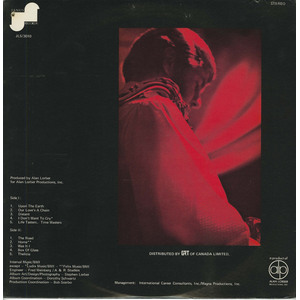
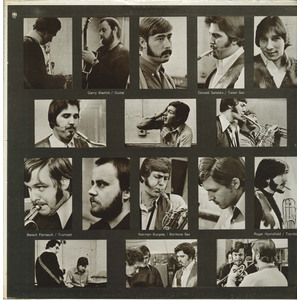
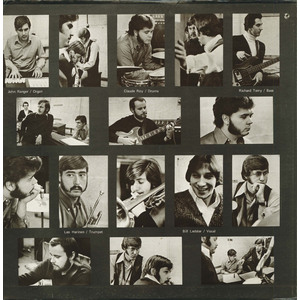
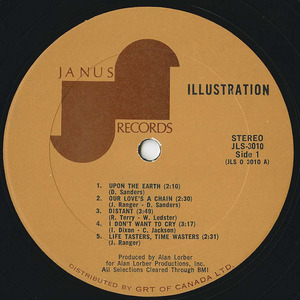
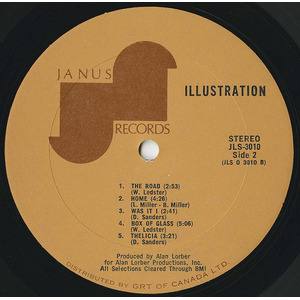
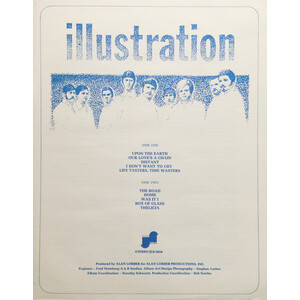
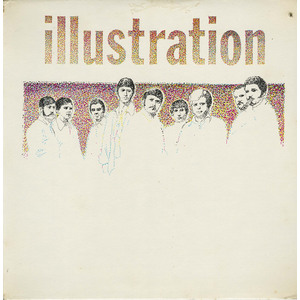
No Comments